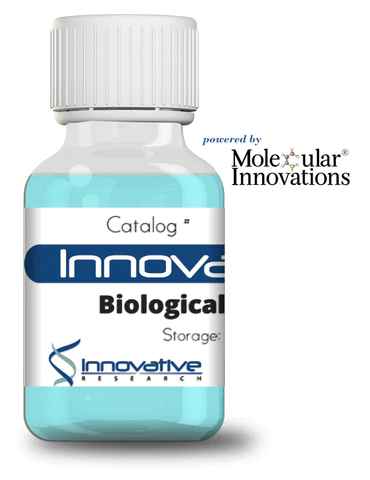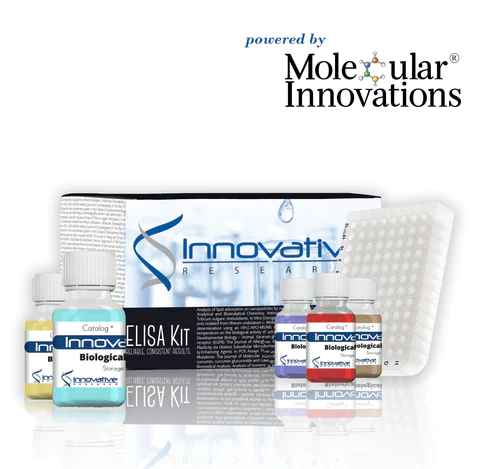The Innovative Research lab pulled together an explainer on one of our recently popular monoclonal antibodies to assist with your discoveries.
Monoclonal antibodies are generated to target specific proteins within the body. MA-1H10 binds and blocks the Very-Low-Density Lipoprotein Receptor (VLDLR), a protein involved in lipid metabolism and potentially implicated in various health conditions. In this explainer, we’ll delve into the significance of MA-1H10 and its potential applications.
What is VLDLR?
VLDLR, or Very-Low-Density Lipoprotein Receptor, is a protein found on the surface of cells, primarily in tissues like the liver, heart, and adipose (fat) tissue. Its main function is to regulate the uptake of lipoproteins, which transport cholesterol and other lipids in the bloodstream, into cells. VLDLR plays a crucial role in lipid metabolism and is essential for maintaining cholesterol balance in the body.
What is a Monoclonal Antibody?
A monoclonal antibody (mAb) is a type of antibody derived from a single type of immune cell, typically a B-cell clone. These antibodies are designed to bind specifically to a particular target molecule, such as a protein, virus, or other substances in the body. They are used for various purposes, including diagnostics, therapeutics, and research.
MA-1H10 and Its Specificity to Monoclonal Antibody to VLDLR:
MA-1H10 is a monoclonal antibody specifically engineered to bind to VLDLR. This means that when introduced into the body or used in a laboratory setting, MA-1H10 will selectively target and bind to VLDLR receptors on the surface of cells that express them. This high specificity makes MA-1H10 a valuable tool for studying and potentially manipulating the functions of VLDLR.
Potential Applications of MA-1H10:
MA-1H10 has several potential applications in both research and medicine:
1. Research Tool: Researchers use MA-1H10 to study the role of VLDLR in various physiological and pathological processes, such as lipid metabolism, cardiovascular disease, and neurological disorders. By selectively blocking or modulating VLDLR with MA-1H10, scientists can gain insights into the functions and mechanisms involving this receptor.
2. Diagnostic Tool: In some cases, MA-1H10 may be used as a diagnostic tool to detect the presence or levels of VLDLR in biological samples, aiding in the diagnosis and monitoring of conditions related to lipid metabolism or other diseases where VLDLR is implicated.
3. Therapeutic Potential: MA-1H10 could potentially serve as a therapeutic agent in diseases where VLDLR dysregulation plays a role. By using MA-1H10, researchers may explore the possibility of developing treatments that target VLDLR-related pathways, such as in disorders involving cholesterol imbalance, insulin resistance, or neurodegeneration.
Considerations and Challenges:
While MA-1H10 holds promise in various applications, it’s essential to consider potential challenges:
Safety: Like any therapeutic or diagnostic agent, the safety profile of MA-1H10 must be thoroughly evaluated to minimize potential side effects or adverse reactions.
Efficacy: The effectiveness of MA-1H10 in modulating VLDLR-related processes needs to be rigorously tested in preclinical and clinical studies.
Specificity: Ensuring that MA-1H10 specifically targets VLDLR without unintended interactions with other receptors or molecules is critical.
MA-1H10, a monoclonal antibody designed to target VLDLR, has the potential to advance our understanding of lipid metabolism and related diseases, as well as to offer new possibilities for diagnostics and therapeutics. Continued research and clinical investigation will help determine the full scope of its applications and benefits in various medical and scientific contexts.
Published Research using Monoclonal Antibody to VLDLR (MA-1H10):
In relation to gene therapy for cardiovascular disease:
Ronald M. Krauss, Jonathan T. Lu, Joseph J. Higgins, Cathryn M. Clary, and Ray Tabibiazar
Mol Metab. 2023 Mar; 69: 101685
VLDR receptor gene therapy for reducing athergenic lipoproteins
Published online 2023 Feb 4.
doi: 10.1016/j.molmet.2023.101685
When using UPA and PAI as predictors of breast cancer where VLDLR is part of the mechanism:
Laura A Mittmann, Julian Dominik, Roman Hennel, Bojan Smiljanov, Florian Haring, Johanna B Schaubächer, Constanze Braun, Lena Padovan, Robert Pick, Martin Canis, Christian Schulz, Matthias Mack, Ewgenija Gutjahr, Peter Sinn, Jörg Heil, Katja Steiger, Sandip M Kanse, Wilko Weichert, Markus Sperandio, Kirsten Lauber, Fritz Krombach, Christoph A Reiche
EMBO Mol Med (2021)13:e13110
uPA-PAI-1 heteromerization promotes breast cancer progression by attracting tumorigenic neutrophils
doi: https://doi.org/10.15252/emmm.202013110
Blake J. Cochran, David R. Croucher, Sergei Lobov, Darren N. Saunders, Marie Ranson
MOLECULAR BASES OF DISEASE| VOLUME 286, ISSUE 27, P24467-24475, JULY 2011
Dependence on Endocytic Receptor Binding via a Minimal Binding Motif Underlies the Differential Prognostic Profiles of SerpinE1 and SerpinB2 in Cancer*
DOI: https://doi.org/10.1074/jbc.M111.225706
VLDLR as a receptor for alphaviruses:
Lars E. Clark, Sarah A. Clark, ChieYu Lin, Jianying Liu, Adrian Coscia, Katherine G. Nabel, Pan Yang, Dylan V. Neel, Hyo Lee, Vesna Brusic, Iryna Stryapunina, Kenneth S. Plante, Asim A. Ahmed, Flaminia Catteruccia, Tracy L. Young-Pearse, Isaac M. Chiu, Paula Montero Llopis, Scott C. Weaver & Jonathan Abraham
Nature volume 602, pages475–480 (2022)
VLDLR and ApoER2 are receptors for multiple alphaviruses
doi: https://doi.org/10.1038/s41586-021-04326-0
When monoclonal antibodies (MA-1H10 and MA-1H5) inhibit fibrin-VLDLR interaction and modulate leukocyte transmigration which serve as therapeutics for fibrin-dependent inflammation in myocardial injury:
Sergiy Yakovlev , Alexey M. Belkin , Ling Chen , Chunzhang Cao , Li Zhang , Dudley K. Strickland , Leonid Medved
Thromb Haemost 2016; 116(06): 1122-1130
Anti-VLDL receptor monoclonal antibodies inhibit fibrin-VLDL receptor interaction and reduce fibrin-dependent leukocyte transmigration
doi: https://doi.org/10.1160/TH16-04-0333
Section 3: Innovative Research Products
Monoclonal Antibody to VLDLR Products:
Innovative Research offers Mouse Anti Human VLDL Receptor Inhibitory Monoclonal Clone 1H10 in a Frozen liquid format, buffered in 0.05M Sodium Phosphate; 0.1M NaCl; 1mM EDTA; pH 6.6. This antibody has been purified using protein A affinity chromatography.
Product:



